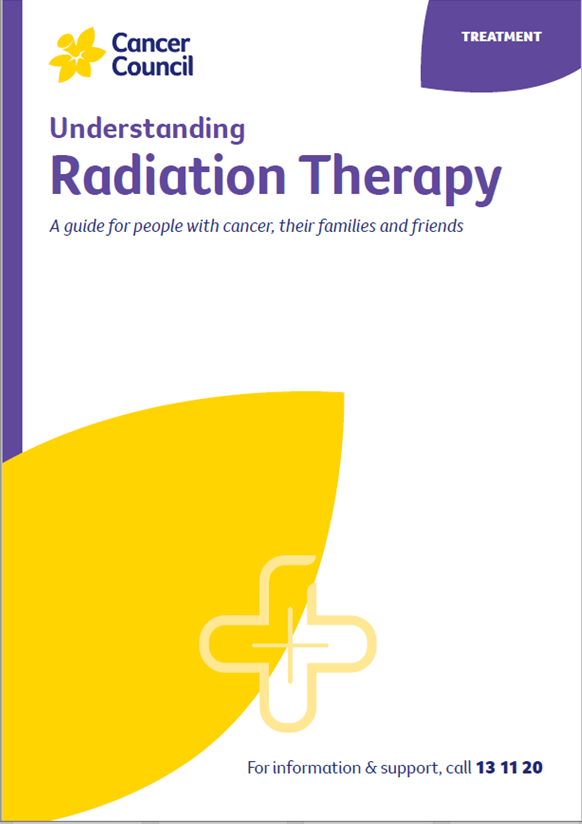- Home
- Non-Hodgkin lymphoma
- Treatment
- Radiation therapy
Radiation therapy for non-Hodgkin lymphoma
Radiation therapy (also known as radiotherapy) uses radiation to kill or damage cancer cells so they cannot grow, multiply or spread.
Learn more about:
- When radiation therapy is used
- Planning for radiation therapy
- Having radiation therapy
- Side effects of radiation therapy
- Video: What is radiation therapy?
- Podcast: Immunotherapy & Targeted Therapy
When radiation therapy is used
You may have radiation therapy on its own to treat low-grade lymphoma or after chemotherapy to treat high-grade lymphoma.
The type of radiation therapy used to treat non-Hodgkin lymphoma is called external beam radiation therapy (EBRT). It is delivered using a machine called a linear accelerator, which produces high-energy x-rays that target cancer cells. It commonly targets an area of lymph nodes (such as in the armpit). It is also sometimes given to the whole body (total body irradiation) before a stem cell transplant.
Planning for radiation therapy
About 3 weeks before you start your treatment, your radiation oncologist will use the results of your imaging scans to help work out the lymph node areas to target with radiation. You will have a planning session with your radiation oncologist, and have another CT scan.
This session will take 1–2 hours and will help your treatment team to precisely target the cancer while avoiding healthy cells.
Having radiation therapy
Understanding Non-Hodgkin Lymphoma Radiation therapy usually starts about a month after your last chemotherapy cycle. You will be in the treatment room for about 15–45 minutes. The actual treatment takes only 1–2 minutes, and you will not be able to see or feel the radiation. Treatments are delivered daily from Monday to Friday. Depending on the purpose of the treatment, you may have treatment for 1–5 weeks. The radiation oncologist will discuss your treatment schedule with you.
Side effects of radiation therapy
Radiation doses used today are lower and more targeted than in the past, so there are fewer side effects. The most common side effect is tiredness. Talk to your treatment team about suitable exercise during radiation therapy – improving fitness can help reduce tiredness.
Treatment can also lead to skin changes such as red, dry and itchy skin at the treatment area. Other side effects will depend on the part of the body being treated.
Side effects can build up towards the end of the course of treatment, but most will be temporary. You will have regular reviews with the treatment team. Talk to them about any side effects that concern you.
For more on the side effects you may experience, call Cancer Council 13 11 20 or see our general section on Radiation therapy.
→ READ MORE: Late effects of treatment
Video: What is radiation therapy?
Watch this short video to learn more about radiation therapy.
Podcast: Immunotherapy & Targeted Therapy
Listen to more episodes from our podcast for people affected by cancer
More resources
Dr Puja Bhattacharyya, Haematology Staff Specialist, Western Sydney Local Health District, Blacktown Hospital; A/Prof Christina Brown, Haematologist, Royal Prince Alfred Hospital and The University of Sydney; Dr Susan Carroll, Senior Staff Specialist, Radiation Oncology, Royal North Shore Hospital and The University of Sydney; Jo Cryer, Clinical Nurse Consultant, Haematology, St George Hospital; Marie Marr, Consumer; Katelin Mayer, Clinical Nurse Consultant, Cancer Outreach Team, Nelune Comprehensive Cancer Centre, Sydney; Vanessa Saunders, 13 11 20 Consultant, Cancer Council NSW; Elise Toyer, Haematology Clinical Nurse Consultant, Blacktown Hospital.
View the Cancer Council NSW editorial policy.
View all publications or call 13 11 20 for free printed copies.

